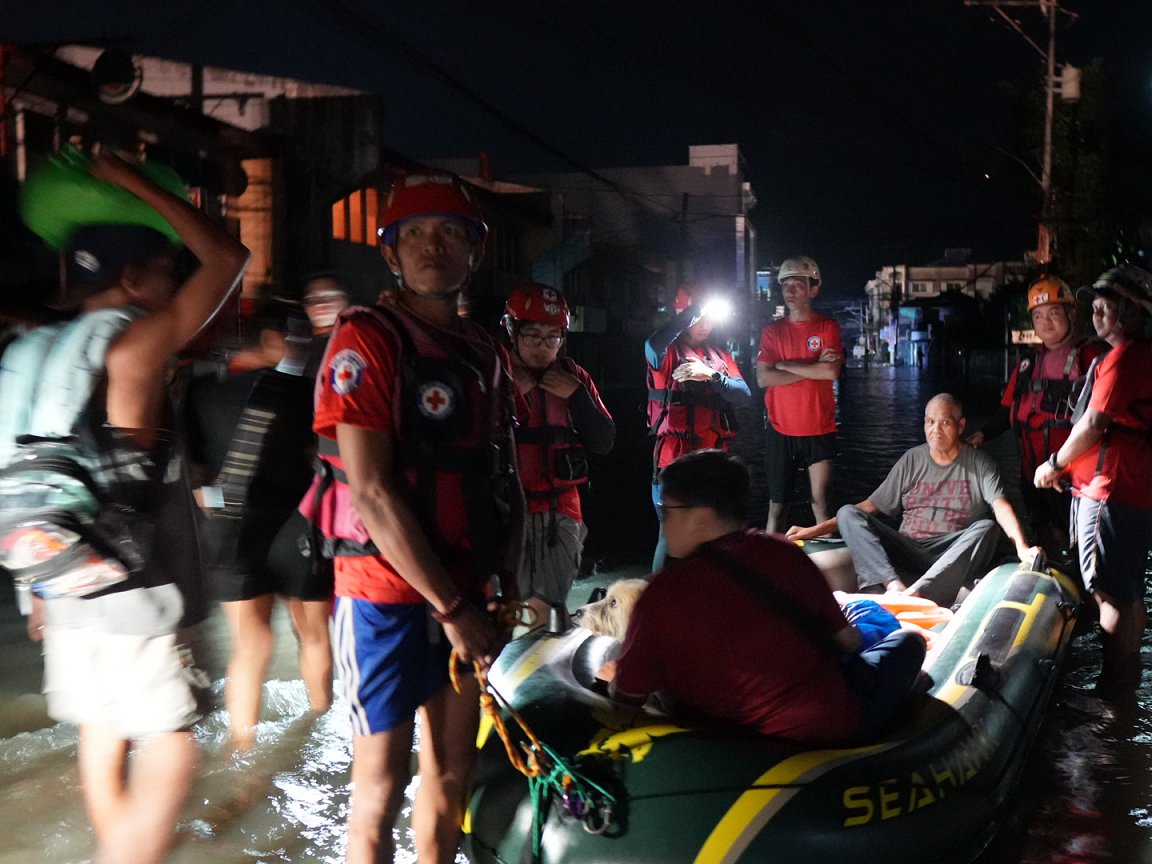
IFRC appeals for international aid after Philippines hit by six back-to-back storms in a month

By the Climate Centre
The IFRC today called for urgent international aid for the Philippines after the country was struck by the sixth typhoon in a month – a clustering of storms reportedly not seen in the region since records began in 1951.
The International Federation is increasing its emergency appeal launched after the first storm in late October to 9 million CHF, with the aim of enabling the Philippine Red Cross to assist more than 86,000 people across 12 provinces.
The most recent storm, Typhoon Man-Yi, known locally as Pepito, first made landfall on Saturday on eastern Cantanduanes island, then a second time the next day (local time) on the main island of Luzon.
Forecasters and the Red Cross had earlier warned of possible life-threatening storm surges, heavy rain and strong winds.
Media reports say at least 160 people died in the five previous storms over the past few weeks.
‘An unprecedented number of storms’
Starting in late October (with local names in brackets), Tropical Storm Trami (Kristine) dropped a month’s worth of rain over the northern Philippines, followed in roughly the same area of the country by Kong-Rey (Leon), Yin-Xing (Marce), Toraji (Nika), and then Usagi (Ofel), which generated a three-metre storm surge.
The Philippine Red Cross has responded to all these storms, half of which reached super-typhoon status, including most recently forecast-based early actions for Man-Yi alongside ongoing response to earlier impacts.
At least 1.4 million displaced people now face limited access to water, sanitation, nutrition and health care, the IFRC said today.
Gwendolyn Pang, Secretary General of the Philippine Red Cross, said: “While providing lifesaving support, we have initiated early actions to help at-risk communities to reduce damage.
“But no one can be well prepared for such an unprecedented number of storms in this short span of time. We need help to reduce the humanitarian impacts of these typhoons.”
The PRC has been responding to these disasters from the start alongside local authorities, to meet the immediate needs of the most vulnerable communities.
‘The Philippines has borne the brunt of typhoon activity in the Pacific this year’
Gopal Mukherjee, IFRC Acting Head of Delegation in Manila, highlighted the urgent need for more aid as local resources are stretched thin: “Already the recovery of impacted communities is interrupted by these typhoons and their compounding effects.
“The humanitarian situation is worsening as Super Typhoon Man-Yi is making its impact.”
Early last week, with just the first four storms of the six on the radar, the NASA Earth Observatory said the Philippines had “borne the brunt of typhoon activity in the Pacific this year.
“Typhoon season in the western Pacific stretches across the entire year, but most storms form between May and October. November typically sees three named storms, with one becoming a super typhoon, based on the 1991–2000 average.”
Philippine Red Cross resources are now stretched thin, dealing with the aftermath of six named storms – three of which reached super-typhoon status. In the photo, PRC personnel rescue people stranded by the most recent of them: Typhoon Man-Yi, known locally as Pepito. (Photo: PRC via IFRC Asia Pacific)